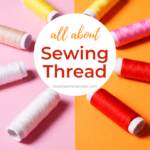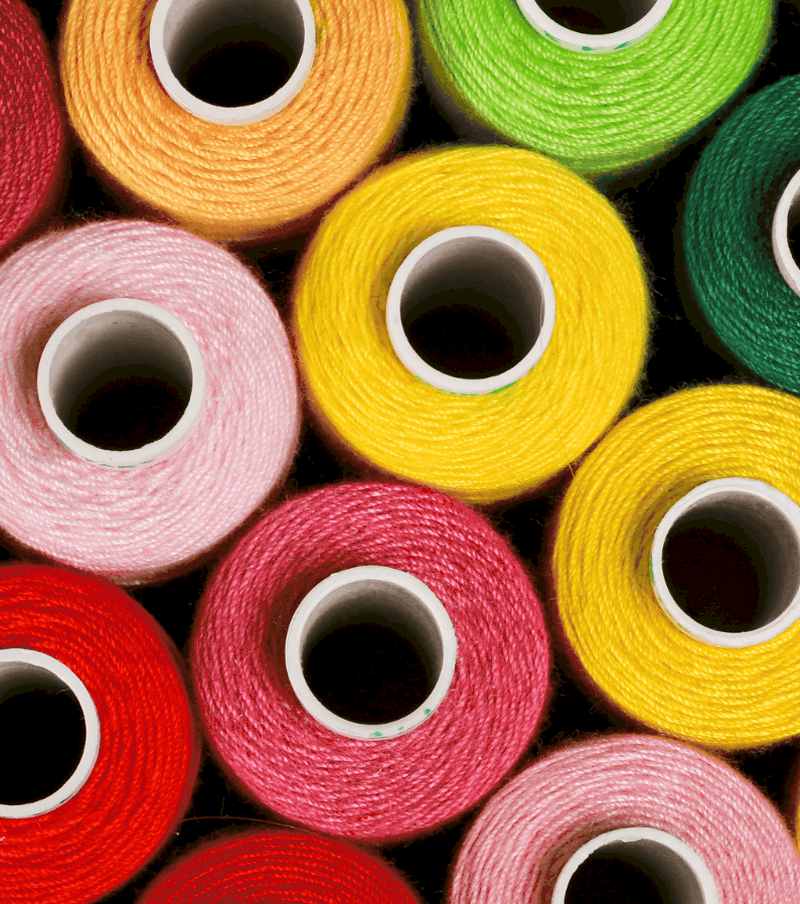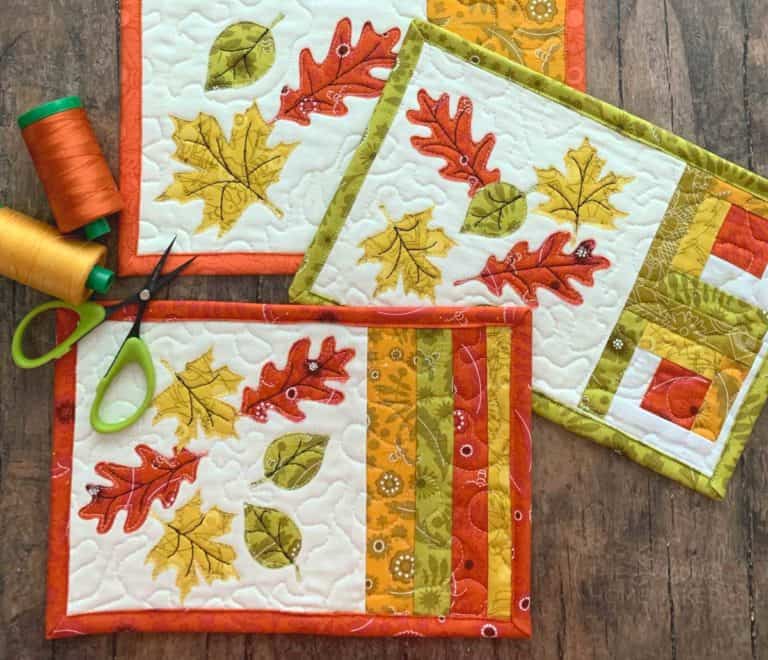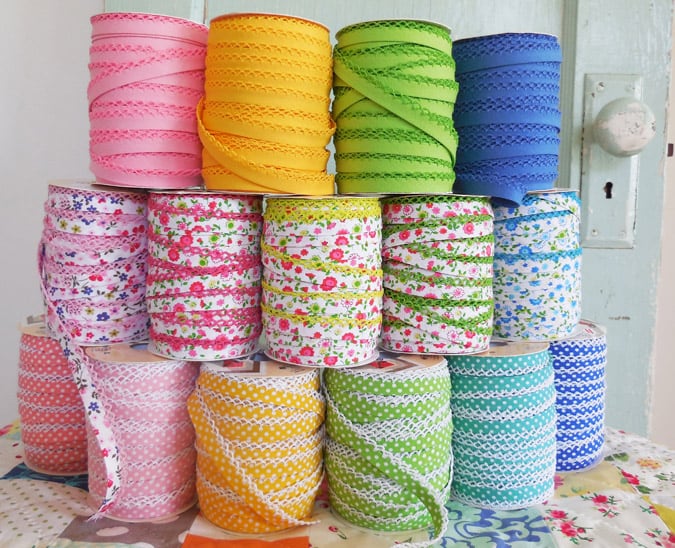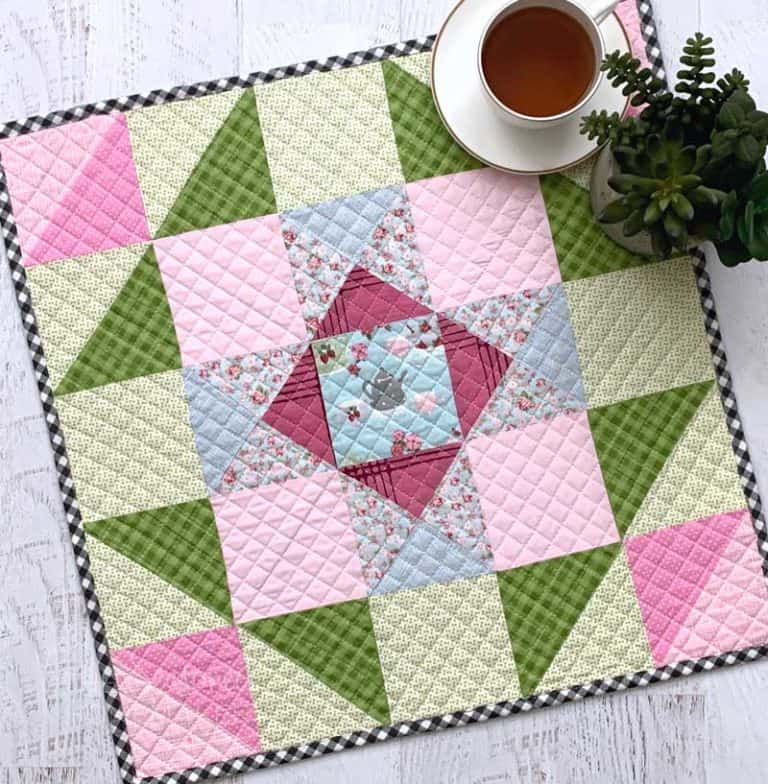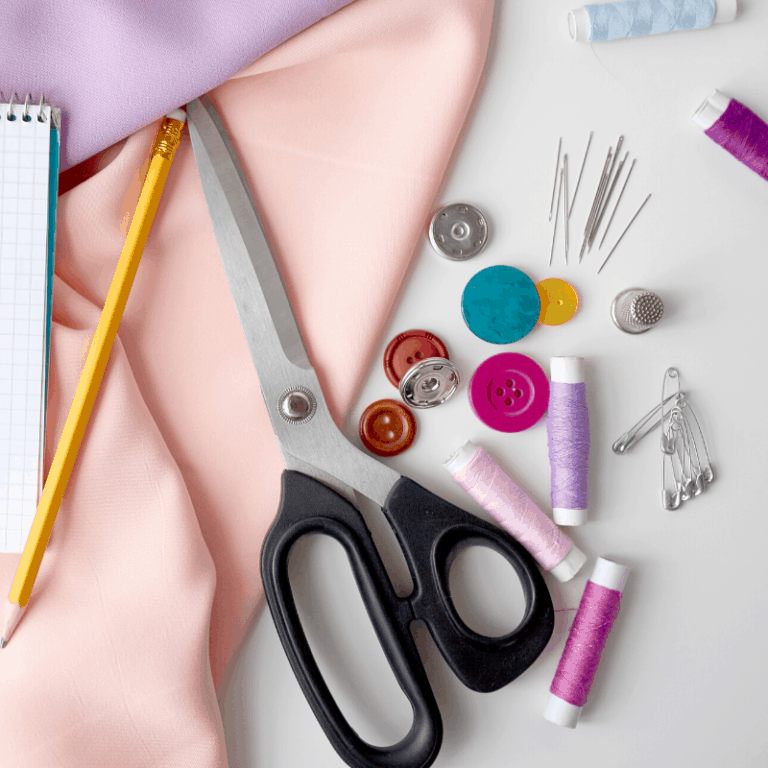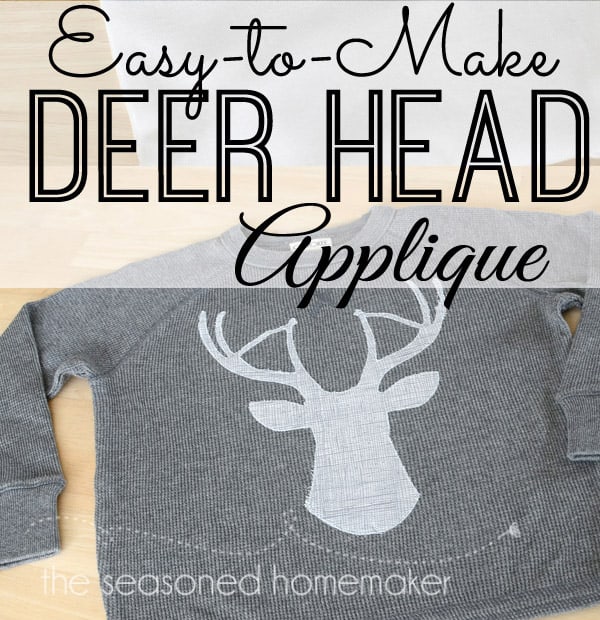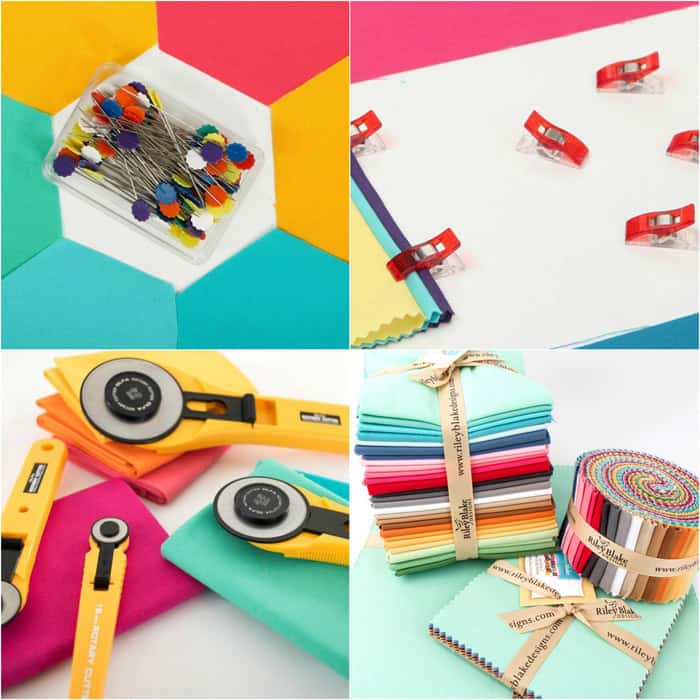The Differences in Sewing Thread
This post may contain affiliate links which won’t change your price but will share a commission.
Inside: The Differences in Sewing Thread
A few years ago I was regularly attending a sewing club. Occasionally, the project demonstrator would say something like, “…and you’ll want to use a 40 weight thread when you blah, blah, blah.” And, they lost me right then and there because I didn’t really understand thread weight and what it meant.
Generally speaking, when I have a project that needs sewing I will pick up a matching spool of Gutermann thread at Joann’s and happily sew my project. When I purchased a sewing machine that embroidered, things got a little complicated. All of the sudden thread weight was a pertinent topic that needed understanding.
The Differences in Sewing Thread
The absolute very first thing you need to know about thread weight is this:
The higher the thread weight number, the thinner the thread.
The second thing you need to know is the thread weight numbers aren’t always clearly stated. Occasionally you will see thread weight that looks like a fraction and is labeled 50/2 or 40/3. The second number indicates thread ply. So, a 50/2 cotton thread would be 50-weight 2-ply thread that is thin and strong. The key point to remember is having two or more plies of thread equals stronger thread.
Understanding thread weight becomes confusing because there really is no universal standard of thread measurement. Only the people on the thread manufacturing side really understand terms like Cotton Count, Denier, and Tex. Occasionally, these terms are slipped into the information on the end of a spool and confuse us further.
Knowing this in depth might make you a thread weight expert, but it’s totally unnecessary. Really, all you want to know is this:
Which thread should I purchase for my project?
50 Wt. Thread
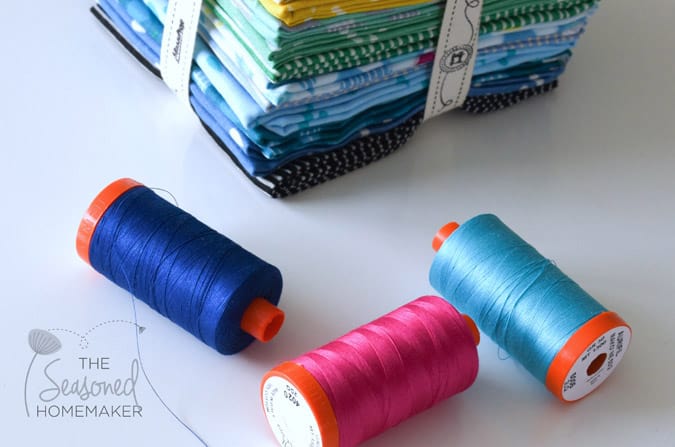
The most common fabric store threads would be considered an all-purpose 50 wt. thread. These threads are polyester or a poly/cotton blend. For instance, Gutermann and Mettler all-purpose threads are a Polyester 50/3 thread. This is suitable for most sewing projects and will hold your project together quite well.
Keep in mind that a 50 wt. all-purpose thread is significantly different from a high quality 50 wt. cotton quilting thread. Both threads will sew well into garments or quilts. However, it is recommended that you choose a higher quality 50 wt. cotton thread for quilting projects. Higher quality 50 wt. threads offer a nice thin thread that won’t add a lot of bulk to seams when piecing a quilt. They are also ideal for machine quilting, appliqué, hand piecing, and hand appliqué.
Over the last year, I have been slowly switching to high quality 50 wt. thread for most of my sewing projects. I prefer Aurifil high quality 50 wt. thread because it is consistently thin and strong.
40 Wt. Thread
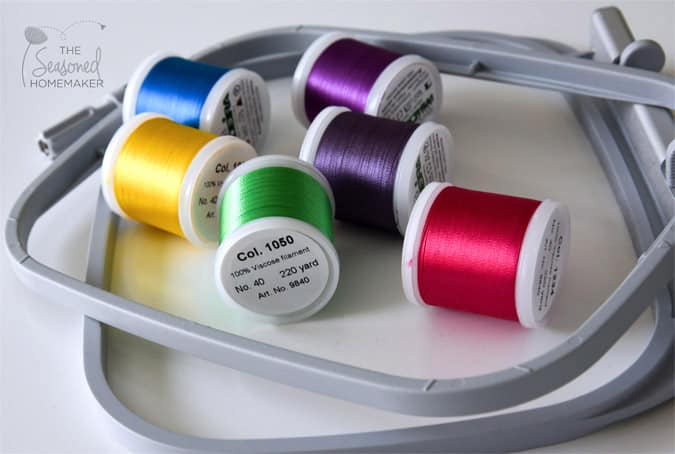
When I think of 40 wt. thread, I think of shiny embroidery thread. And, for the most part, that’s what you would want for machine embroidery projects. Occasionally, you may run into a 30 wt. embroidery thread that is a bit heavier than a 40 wt. and isn’t as common.
Most 40 wt. threads are made from either rayon or polyester. It used to be that rayon was considered the better of the two because of its sheen and color choices. However, rayon has its drawbacks. It tends to break when sewing and doesn’t hold up well to everyday laundering conditions.
Recently, great strides have been made with 40 wt. polyester thread for machine embroidery. Polyester threads can now match rayon threads for both sheen and color choice. It is now my thread of choice for machine embroidery.
Don’t dismiss this thread if you don’t own a machine that includes an embroidery feature. I use 40 wt. polyester thread for sewing decorative stitches and appliqué. It adds a little shine and a lot of color.
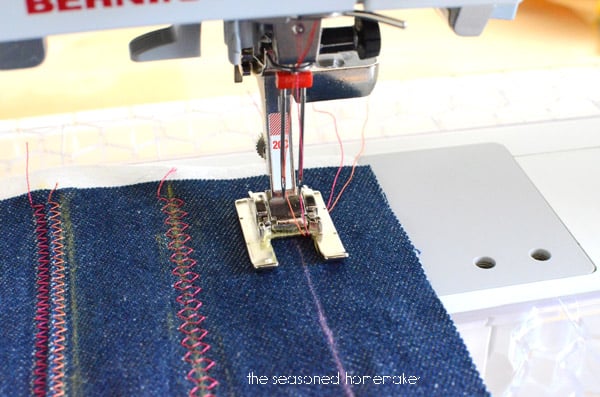
The key to successful sewing with 40 wt. thread is in using the right needle. I recommend using an Embroidery Needle because it has a large eye and a special scarf that will protect delicate threads. The combination of these two things will prevent thread breaks when sewing.
40 Wt. Serger Thread
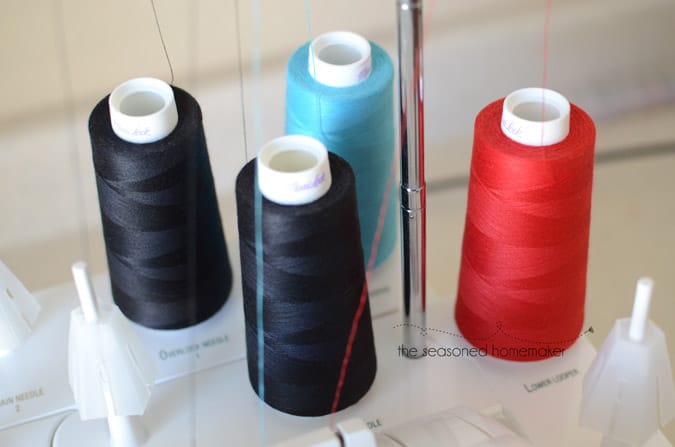
High-quality serger thread is also a 40 wt. polyester thread. The difference is serger thread has a special coating that allows it to withstand the high speed and tension demands of serging. I have been known to use my serger thread for all-purpose sewing. It generally performs quite nicely. It is a bit heavier than a 50 wt., but this wouldn’t make a difference if you were sewing something like a pillow or bag.
12 – 18 Wt. Thread
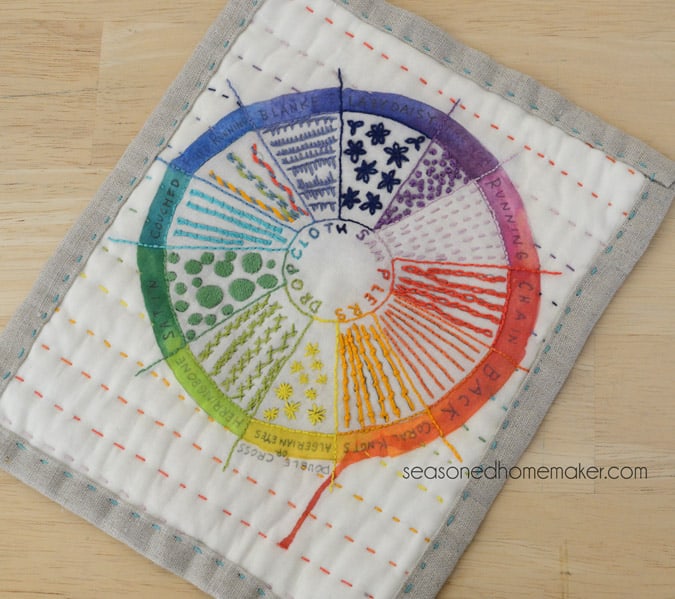
If you want to do some hand stitching or heavy topstitching then a 12 wt. – 18 wt. thread will be your best choice. The 12 wt. Aurifil thread in the above photo is ideal for hand quilting or even hand embroidery.
It works equally as well for topstitching denim. Most of the heavy duty topstitching thread you see at sewing stores will likely be 18 wt. which works, too. However, it’s important to look at thread quality. Using an inferior quality heavyweight thread for hand stitching or careful top stitching may cause a lot of thread breaks or fraying on garments.
I like to use these heavier threads for straight stitch appliqué. It defines the stitching and adds another layer of texture to a project.
Occasionally, you will see a 12-18 wt. variegated thread that is suitable for hand quilting or defined machine quilting. I don’t own very many of these threads, but they definitely can add drama to all types of projects.
Note: When using heavier threads like these you will likely have to adjust your tension a bit.
28 Wt. Thread
Another option for hand quilting or hand stitching is a 28 wt. thread. Like the number indicates, it sits somewhere between a heavier 12 wt. and a super fine 50 wt. I’ve never used this thread, but have seen it on a small hand-quilted project. I thought that it was ideal for hand quilting because it defines the quilting without being overly heavy.
This thread is harder to find and you are more likely to see it in a set such as this one: Aurifil Thread Set . Whenever I see 28 wt. threads in stores or at quilt shows, I like to pick up one or two in neutral colors since I don’t use it that often.
60 Weight Bobbin Thread
If you machine embroider then you’ve probably used a 60 wt. bobbin thread. This super thin polyester thread is ideal in the bobbin when the back of your project will never show.
Recently, I’ve heard that a few quilters are using 60 wt. threads. Personally, I’ve never used it for quilting projects because I’ve only seen it in black or white. However, a high quality 60 wt. thread would be super thin and seriously strong.
Final Thoughts
Like I said earlier, the only thing you really need to know is this: The higher the thread weight number, the thinner the thread. Knowing a little more about different thread weights opens up all sorts of options for future projects. I encourage you to step out a bit and try some different weight threads in future projects. Top stitch a bag handle with a 12 wt. thread. Add a decorative stitch to the hem of a garment using a 40 wt. polyester thread. Experiment with variegated threads on your next quilt project.
Most importantly, imagine the possibilities.


